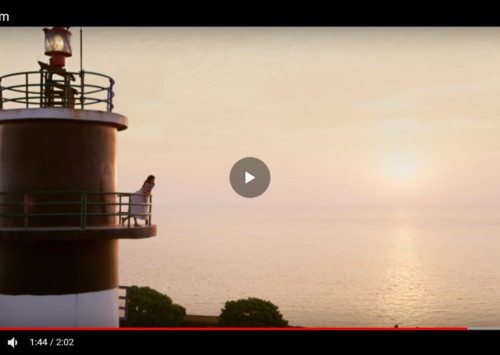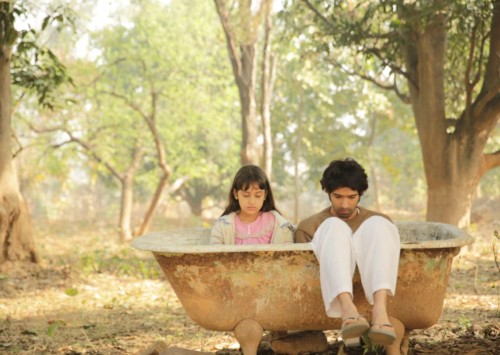Reviving the lost melody of Sarangi

A bow-stringed instrument carved from a single piece of wood, called Sarangi, is acclaimed for resembling the sound of a trained vocal artist.
In the world of Indian folk and classical Hindustani music, a humble, bow-stringed instrument carved from a single piece of wood, called Sarangi, is acclaimed for resembling the sound of a trained vocal artist.
The Sarangi is the only instrument which can produce almost all the nuances of vocal music of any style, be it dhrupad, khayal, thumri, tappa, bhajan or even ghazal, with exact embellishments and intonations, says India Instruments, an online platform that makes Indian musical instruments in professional quality available to musicians in Europe.
While the instrument is frequently used in Indian folk music, mainly that emerging from Punjab, Rajasthan and Assam, it has also made its mark in the neighbouring countries of Pakistan, Bangladesh and Nepal.
The short-necked instrument, which has a box-like structure with three hollow chambers and four playing strings with about 36 sympathetic strings running under the main strings, is generally played by the musician while being seated. The musician holds the Sarangi against their left shoulder in a vertical position and plays it with the help of an arched bow held in an underhand grip in their right hand. The fingers of the left hand are finally pressed against the strings to produce specific pitches.
“The first time I heard the melodious sound of a Sarangi, my eyes were full of tears. It completely replicates the human vocal skills and since then I decided to learn it,” says Vanraj Shastri from Ahmedabad, a Sarangi musician, and disciple of Sarangi maestro, late Pandit Dhruba Ghosh and table and sitar maestro Pandit Nayan Ghosh.
Reviving Sarangi from the historical hues
One of the reasons behind Sarangi’s lack of a respectable place among other classical instruments is because of its association with dancing and singing girls of the lower castes in the early 19th century, writes the India Instruments.
“Here the main attraction of the performance used to be the dancer or the singer, and the sarangi player, no matter how accomplished a musician he was, always remained in the background,” it adds.
While many artists allude Sarangi’s lack of recognition to its association with courtesans, however others believe that many instruments used in the same settings have rather consistently remained popular.
Finally, Sarangi is emerging from the shadows and reclaiming its glory. It has been helped along with new outlets for music. “However, in today’s time, the commercial music is amalgamating with the diverse sound set of Sarangi. The Coke Studio series has acted as a consistent push and has led to the boom of the instrument in modern music,” says Aniket Prasanna, a music producer and guitarist who teaches music in New Delhi.
Apart from making its mark on commercial music, Sarangi has been luring the likes of many from across the world with its rich tonal texture and techniques.
“Social media has also proven to be a boon for Sarangi and has helped it get the recognition that it deserves. Sarangi is now globally acclaimed with many people practicing and learning it around the world,” Shastri tells Media India Group.
Proving Shastri to be right, there are fans of classical Indian music who have now begun discovering Sarangi. Roland Janssens, a Belgian, is one such recent convert to Sarangi. “I came across a social media post where a musician was playing the Sarangi and the sound fascinated me so much that I couldn’t stop thinking about it. I have watched a lot of videos and am planning to buy the instrument soon,” Janssens tells Media India Group.
While Sarangi is gradually carving up a space for itself, some artists say that government patronage is needed to take the instrument to a level of recognition that it deserves.
“Talented artists in the country are regularly making us proud with their Sarangi skills and it is true that Gharana artists will continue to take the art forward however, the government must immediately look into the matter to ensure that the instrument does not fade away like many other traditional instruments,” says a senior Sarangi artist who wishes to remain anonymous.














very nice article, well researched and written.
A bowed instrument scooped out of a single log of wood. Three main playing strings of gut, of varying thickness. Thirty seven sympathetic steel strings. Played with a bow made of horsehair. Strings are stopped not by fingertips but by the base of the nails. Used as a prominent accompaniment to the vocalists in Northern Indian Classical music, and also for solo performance.
The sarangi instrument is similar to a violin in that it’s played with a bow, but it’s held vertically with the sound chamber underneath. The sarangi instrument is usually made from a single block of wood that’s carved out, and its belly is hollowed out and covered with parchment.
Sitar is a commonly used stringed instrument in South Asian countries such as Bangladesh, India, and Sri Lanka. The Sitar instrument is a plucked stringed instrument that contains movable frets and a gourd resonator. “Sitar” is derived from the Persian word “Sehtar”(seh+tar) meaning “three-stringed”. Sitar received its name because the first used instruments has only three main playable strings to produce a melody.
The sarangi is the only instrument which can produce almost all the nuances of vocal music of any style, be it dhrupad, khayal, thumri, tappa or bhajan or even ghazal, with exact embellishments and intonations.